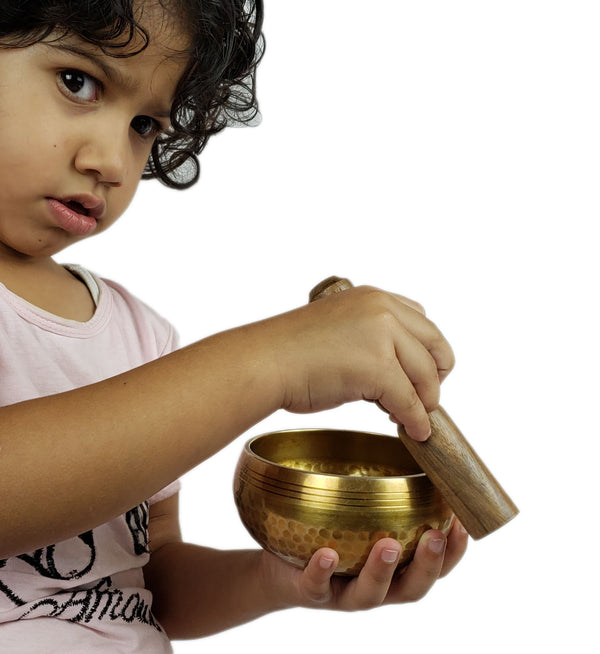Your Cart is Empty
100% Free Shipping all over USA
100% Free Shipping all over USA

Tibetan Prayer Flags
February 02, 2024 4 min read
In the Himalayas, where majestic mountains and serene scenery meet to create a stunning showcase of nature's beauty, colorful Tibetan prayer flags flutter in the wind.
These flags have a rich history that stretches back to the Bon religious tradition. In this shamanistic tradition, Bonpo used primary-colored plain flags in Tibet before evolving into traditional prayer flags featuring woodblock-printed text and images.
As they flutter in the wind, these vibrant symbols carry whispered prayers and heartfelt blessings for all who cross their path, adding depth to their visual beauty.
These vibrant symbols of faith go beyond mere decoration; they are known as Lungta and hold a deep spiritual significance deeply entrenched in Tibetan Buddhist tradition.
Join us on a journey to unravel the essence of Tibetan prayer flags as we delve into their intricate details - from an overview of their purpose to the array of different types available and the profound symbolism behind each captivating hue.
Embracing the Essence of Tibetan Prayer Flags
Tibetan prayer flags are more than just pieces of cloth; they carry the weight of sacred mantras, prayers, and symbols in their rectangular shapes.
Made from cotton or silk, these flags hold deep significance within Tibetan Buddhist tradition as bearers of good fortune, happiness, and harmony to both the environment and those who happen upon them. When hung outdoors, they dance in the wind as if spreading their blessings far and wide.
Nepal Sutras were once inscribed on cloth banners that later traveled beyond borders as prayer flags. According to legend, this tradition traces back to Gautama Buddha himself - his prayers written on battle flags wielded by devas against their adversaries known asuras.
This tale has been associated with Indian Bhikṣus too; perhaps it serves as a way for them to symbolize commitment to ahimsa through carrying heavenly banners.
Historically challenged during the Cultural Revolution yet never entirely eradicated despite discouragement efforts at that time - in part leading possibly to some loss of traditional designs - prayer flag styles can be seen in diverse forms across present-day Tibet.
Types of Prayer Flags: A Tapestry of Devotion
Within the realm of Tibetan prayer flags, there is a multitude of types, each with its own distinct purpose and deeply embedded symbolism. Let's delve into some of the most prevalent varieties:
Lungta Flags: The Lungta, also known as "Windhorse," are the quintessential prayer flags that hold widespread recognition. These square or rectangular-shaped horizontal flags are connected along their upper edges to an elongated string or thread.
They are often positioned on a diagonal line from high to low between two points (e.g., a rock and the apex of a pole) in elevated locations like temple summits, monasteries, stupas, and mountain passes.
Bearing mantras, auspicious symbols, and prayers; it is believed that these Lungta flags carry the blessings and intentions inscribed on them while harnessing the wind as a conduit to disseminate these benevolent blessings across the vicinity.
Darchor Flags: Darchor prayer flags stand tall in vertical alignment at numerous sacred sites alongside monasteries. These grandiose flags feature elaborate artwork portraying deities, enlightened beings, and revered landscapes. Serving as tangible representations of devotion; they seek to evoke blessings and foster an enhanced connection with divinity.
Color Meaning of the Prayer Flags: Unlocking Symbolism
Tibetan prayer flags fascinate with their vibrant colors, each encapsulating deep symbolism and significance. Let's explore the profound meanings behind these exquisite hues:
Blue: The ethereal color blue is a poignant representation of the vast sky and boundless space, embodying wisdom, tranquility, and an unwavering shield of protection. It finds association with Windhorse, a symbol that personifies the idea of well-being or good fortune.
White: The pristine hue of white embodies purity, illuminating clarity akin to the snow-capped peaks of the Himalayas. It symbolizes Buddha's enlightened form while being linked with Guru Rinpoche (also known as Padmasambhava), an entity exuding wisdom and epitomizing ultimate truth.
Red: Symbolic of power, fervor, and bestowed blessings - the striking red holds testament to compassionate deeds by enlightened beings. Its connection rests with Chenrezig whose essence radiates infinite light and boundless compassion.
Green: A truly tranquil shade representing harmony, equilibrium as well as restorative capabilities - inclusive reflection on acts within nature - green echoes attributes embodied by Amitabha such as fearlessness in conjunction with virtuous accomplishments.
Yellow: Radiant yellow bears connotations related to knowledge acquisition complemented by prosperity; it signifies the earth element whilst finding resonance with Green Tara - a figure exemplifying abundance alongside the realization of aspirations.
Conclusion:
Tibetan prayer flags are imbued with profound significance beyond their colorful appearance. They embody devotion, blessings, and a deep spirituality that evokes tranquility and connection to the sacred.
Exploring the diverse types of prayer flags and delving into the symbolism behind their colors allows us to grasp the intricate layers of meaning and purpose that these flags encapsulate.
As they flutter in the wind, carrying prayers and mantras far and wide, Tibetan prayer flags serve as a poignant emblem of how all beings are interconnected, illustrating the enduring influence of compassion and wisdom.
Let's embrace not only the visual beauty but also delve deeper into the symbolic richness embodied by Tibetan prayer flags, allowing them to uplift our spirits through their mesmerizing presence.
Leave a comment

Subscribe to Khusi
Subscribe to our Newsletter for exclusive deals and early access.
